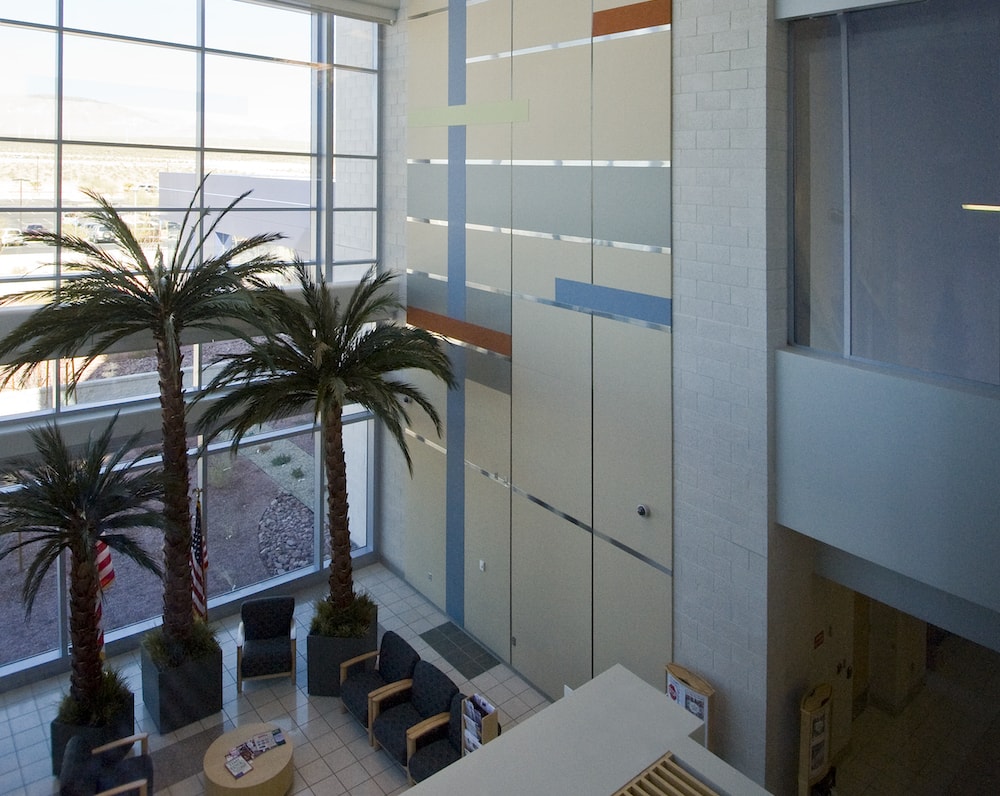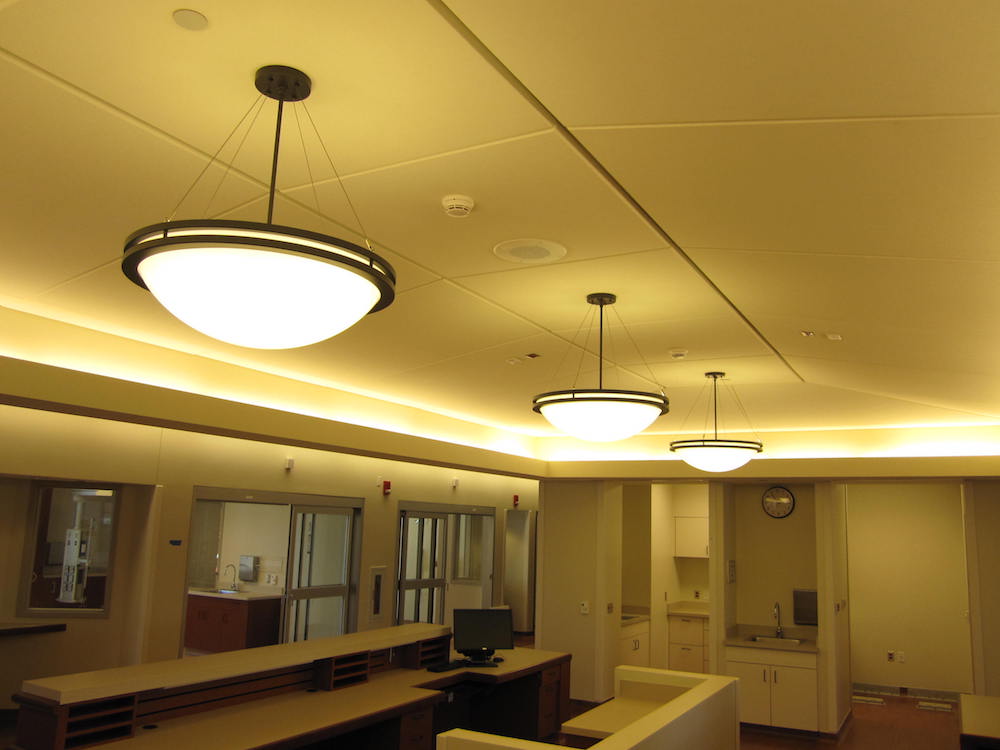For architects looking to design sustainable buildings—especially in healthcare—smart technologies and renewable energy might be top of mind. But often overlooked, and perhaps the most important to get right from the outset, is designing an energy-efficient building enclosure.
“The sexy things are solar panels and windmills on your roof and vegetative roofs—and those are cool things—but the best bang for your buck is to make the building envelope as efficient as possible right from the beginning,” says Gale Tedhams, director of sustainability at Owens Corning. “The building envelope is your foundation for good energy efficiency.”
Since there are no real do-overs with the building envelope in any market sector, it’s important that AEC teams carefully plan their designs and select the right products. With the added goal of meeting at least one of the many green building certifications and standards in the industry, this process becomes more complex.
Architects looking for products created with sustainable materials can seek out Greenguard, Living Product Challenge, and Cradle to Cradle Material Health certifications, among others. Architects that are designing sustainable healthcare facilities can also turn to resources like the Green Guide for Healthcare, which offers tools and guidelines for designing green healthcare buildings.
Tedhams says at Owens Corning, building science experts are available to help builders navigate sustainability questions and figure out what the right solutions are for their specific projects and desired outcomes. The company also produces environmental product declarations (EPDs) that lay out the materials, certifications, and environmental impacts of products. “We make sure that we have the documentation and the transparency information for our products that's going to meet the needs of the criteria for a wide range of building programs,” Tedhams said.
Along with environmental impacts, sustainable building standards account for the impact of buildings on the health and well-being of occupants. Building envelopes play a significant role in this, as factors like indoor air quality and ventilation, acoustics, daylighting, and fire resistance are all of concern, especially in healthcare facilities where health is a priority.

From LEED to the Living Building Challenge to WELL, each sustainable building standard sets its own requirements for indoor air quality, acoustics, and thermal comfort. LEED v4 for Building Design and Construction has comprehensive requirements for air quality, which cover entryway systems, filtration, interior cross-contamination prevention, and more.
The LEED guideline also outlines rules for low-emitting materials, which must meet 100 percent of the compliance threshold in the area of building envelope materials. For healthcare buildings, there are additional requirements, including that batt insulation products can’t contain any formaldehyde.
LEED also offers LEED for Healthcare, which generally mirrors regular LEED requirements while tailoring guidelines to the unique demands and regulations of healthcare buildings. Areas of concern unique to this design sector include 24/7 operations, patient privacy, chemical use, and infection control requirements.
WELL has around 29 separate guidelines relating to air quality alone, with delineations for areas including microbe and mold control, healthy entryways, humidity control, air infiltration management, and toxic material reduction.
Similar to LEED, WELL’s guidelines limit the presence of formaldehyde in building materials. Companies like Owens Corning are expanding their offerings to provide additional formaldehyde-free options. Last year, the company introduced the first formaldehyde-free mineral wool insulation for the North American market, Thermafiber® SAFB™ Formaldehyde-Free. In 2018, the company intends to further expand its formaldehyde-free mineral wool product offerings.
“Our formaldehyde-free product is especially appropriate to achieve green building standards because now it brings the fire safety aspect of mineral wool insulation combined with indoor air quality into the healthcare sector,” says Stephanie Maxson, product manager at Owens Corning.
The Thermafiber® formaldehyde-free line has the International Living Future Institute’s Declare label and Greenguard Gold certification. The line provides acoustical control, thermal performance, and fire protection while not introducing harmful chemicals into the air.
Ultimately, as the green building industry continues to grow, so will the need for products that help architects meet guidelines and performance goals for sustainable design. AEC teams looking to stay relevant can look to manufacturers for transparency information as well as online databases and green building guidelines to help make good choices for a sustainable world.
Related Stories
| Aug 11, 2010
'Flexible' building designed to physically respond to the environment
The ecoFLEX project, designed by a team from Shepley Bulfinch, has won a prestigious 2009 Unbuilt Architecture Design Award from the Boston Society of Architects. EcoFLEX features heat-sensitive assemblies composed of a series of bi-material strips. The assemblies’ form modulate with the temperature to create varying levels of shading and wind shielding, flexing when heated to block sunlight and contracting when cooled to allow breezes to pass through the screen.
| Aug 11, 2010
8 Things You Should Know About Designing a Roof
Roofing industry expert Joseph Schwetz maintains that there is an important difference between what building codes require and what the construction insurance industry—notably mutual insurance firm Factory Mutual—demands—and that this difference can lead to problems in designing a roof.
| Aug 11, 2010
Piano's 'Flying Carpet'
Italian architect Renzo Piano refers to his $294 million, 264,000-sf Modern Wing of the Art Institute of Chicago as a “temple of light.” That's all well and good, but how did Piano and the engineers from London-based Arup create an almost entirely naturally lit interior while still protecting the priceless works of art in the Institute's third-floor galleries from dangerous ultravio...
| Aug 11, 2010
Seven tips for specifying and designing with insulated metal wall panels
Insulated metal panels, or IMPs, have been a popular exterior wall cladding choice for more than 30 years. These sandwich panels are composed of liquid insulating foam, such as polyurethane, injected between two aluminum or steel metal face panels to form a solid, monolithic unit. The result is a lightweight, highly insulated (R-14 to R-30, depending on the thickness of the panel) exterior clad...
| Aug 11, 2010
Nurturing the Community
The best seat in the house at the new Seahawks Stadium in Seattle isn't on the 50-yard line. It's in the southeast corner, at the very top of the upper bowl. "From there you have a corner-to-corner view of the field and an inspiring grasp of the surrounding city," says Kelly Kerns, project leader with architect/engineer Ellerbe Becket, Kansas City, Mo.
| Aug 11, 2010
AIA Course: Historic Masonry — Restoration and Renovation
Historic restoration and preservation efforts are accelerating throughout the U.S., thanks in part to available tax credits, awards programs, and green building trends. While these projects entail many different building components and systems, façade restoration—as the public face of these older structures—is a key focus. Earn 1.0 AIA learning unit by taking this free course from Building Design+Construction.
| Aug 11, 2010
AIA Course: Enclosure strategies for better buildings
Sustainability and energy efficiency depend not only on the overall design but also on the building's enclosure system. Whether it's via better air-infiltration control, thermal insulation, and moisture control, or more advanced strategies such as active façades with automated shading and venting or novel enclosure types such as double walls, Building Teams are delivering more efficient, better performing, and healthier building enclosures.
| Aug 11, 2010
Glass Wall Systems Open Up Closed Spaces
Sectioning off large open spaces without making everything feel closed off was the challenge faced by two very different projects—one an upscale food market in Napa Valley, the other a corporate office in Southern California. Movable glass wall systems proved to be the solution in both projects.







